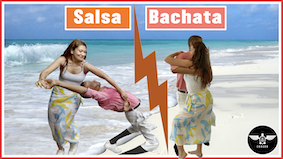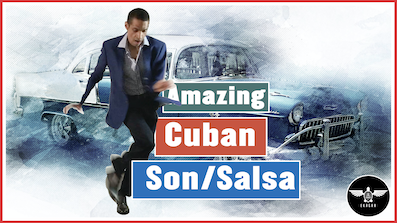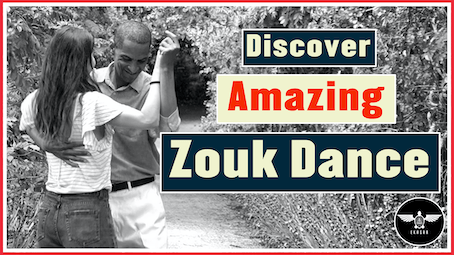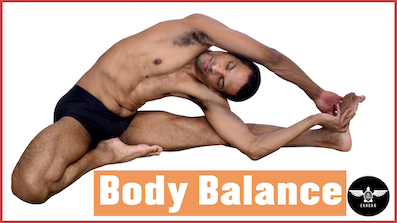
Did you know that 90 to 95% of salsa dance does not involve a single salsa step? Your read right. And if you struggle after many years of practice, chances are, you focused a lot on steps rather than the 95% that mattered the most.
In this post, I will provide clear instructions on how to dance salsa properly. From the two essential secrets you need to master this dance, to the unsuspected benefits of salsa dance.
Not only is Salsa dance not hard, but it’s also one of the most underrated activities contributing to well-being. Additionally, it’s a good and fun way to lose weight. Oh, and did I mention that you can also meet pretty girls and guys who share at least one thing in common with you?
What we will cover?
We will first dive into the key secrets you need to master salsa dance. Then, we will revisit the origins of this dance style, its benefits for your well-being, and even how it could be used in businesses. But first, let’s break down how your body perceives salsa music/dance. That way, you will understand why I recommend following a specific order.
Salsa dance to increase cognitive functions
One of the most underrated aspects of salsa is how different parts of our senses get to work all at once. It is not just about listening to music or moving randomly. A coordination effort is required between:
– The sound received through your ears,
– Its interpretation by your brain,
– The message formulation that is then sent to other parts of your body with a specific set of movements that occurs,
– And the occurrence of this movement in synchronization with the music.
🇨🇺 Causes of failure
Many people do not go beyond one or two aspects of salsa dancing because it’s complicated to interpret everything that happens between the music, our brain, body, and steps. Moreover, if you factor in the fact that you must also “manipulate” your dancing partner’s body to create harmonization, you then realize that dancing salsa can be very complex. And that’s where the frustration lies. This is why I advise people who are not advanced dancers to avoid salsa congresses. Especially if what they are looking for is to improve their skills. Sure, in congress, you can do what the trainer shows. However, as soon as you return home and try to re-enact those moves, you will have forgotten them all. Ultimately, you will end up being discouraged and will give up.
🇨🇺 Understand the multifaceted requirement
When I started dancing, I analyzed carefully what was taught and how it compared with my description of dance which is the “ability to freely and willingly move and order your body in connection with your thoughts”. That’s why I spent the first two years primarily focused on listening to rhythm and learning body movement. In other words, I focused on 95% of the salsa journey. And it does not matter whether you know 100 salsa moves or 1000. If you cannot identify song patterns and command your body the way you want it, you will never be able to dance salsa fully.
📌 “Listening” to the music
The Clave and the conga are the most important musical instruments for a salsa dancer. That’s because their patterns are directly connected to the movements of a dancer’s feet. Therefore, it is crucial to identify the patterns of at least one of them in a song. For my part, I focus primarily on the Clave because it is one of the base instruments of many Afro-Cuban dance styles.
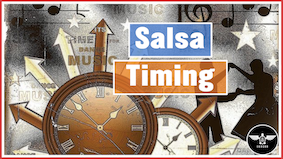
🎶 Clave de rumba
For the clave, I have developed a 5-level musical hearing program that is free. It explains you, step-by-step, the types of songs you should listen to and why. Indeed, if you jump into salsa music too quickly, when you cannot even spot where the clave is, you won’t dance on beat.
One of the most popular clave patterns in salsa is clave for rumba 3/2. That pattern is found heavily in Cuban Rumba music. Therefore, studying Cuban Rumba makes a lot of sense, even before approaching salsa. Moreover, if you watch rumba videos, you will realize that the dancers move according to that musical instrument. This is, therefore, the perfect way to train your ear and foot coordination. Finally, the other advantage of rumba music is that it only uses a few instruments. This means you can spot the clave notes more quickly than in a pure salsa song, infected with tones of instruments.

# 3/2 and 2/3 Clave de rumba
As you can see from the pictures above, there are two ways to play the Clave in Rumba. Either the 2/3 or 3/2.
These numbers mean that you will hear the clave five times on a basic rumba sequence, which consists of 2 measures of 4 beats each.
● Rumba clave2/3
On the 1st measure, you hear it twice (on beats 2 and 3). Then three times (on beat 5, the “&” in between 6/7, then the “&” after 8).
● Rumba clave 3/2
On the 1st measure, you hear the clave three times (1, & between 2/3, and & just at the end of the 4th beat). On the second measure, you will hear the clave twice on 6 and 7. Check out the video for a practical explanation of the rhythm.
Once the hearing is well developed, it’s time to turn our focus on body movements. Both can happen conjunctly. But note that we are not talking about salsa dance movements but natural body motions.
📌 Body movement
This part is challenging because it requires you to become the full captain of your body and mind. Just like a captain, it’s imperative to order different parts of your body to do what you desire, when you want it, and at the pace you want it. I created many body movements videos. The one below is one that I use every day. There are many great reasons for this. First, I warm up my body, then train every part to move the way I want. Secondly, I simultaneously educate my ears since I move to the rhythm. Lastly, it’s a great way to prevent injuries. So much so that I use it before I run, kickboxing bags, or even practice yoga. Therefore, spend 10-20 minutes a day with body isolation/movements and see how it will improve your salsa game in the long run.
Only after you have absorbed these two concepts of body movements and good hearing for the music can you focus more specifically on salsa steps.
📌 Dance Steps
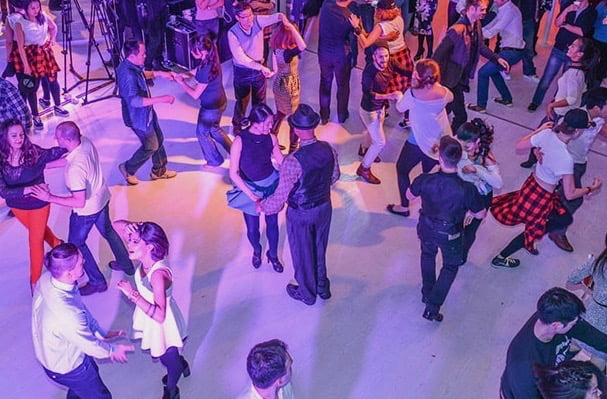
Once you have sorted out the first two issues, then you can dive more into doing salsa steps. I say “dive more” because, with Cuban Rumba, you already do some salsa steps. You then realize the influence of this dance on salsa.
In the following videos, I discuss a few dance steps and the right technique.
We will see:
– Use the clave in a salsa song,
– Move your body,
– The main techniques to understand how to apply your body weight,
– How do you lead a partner, and what signals you give to her.
🎶 A basic salsa dance step
I only use one dance step to cover the theoretical and practical parts in the video below. I will just illustrate some of the issue’s dancers face with the steps and why.

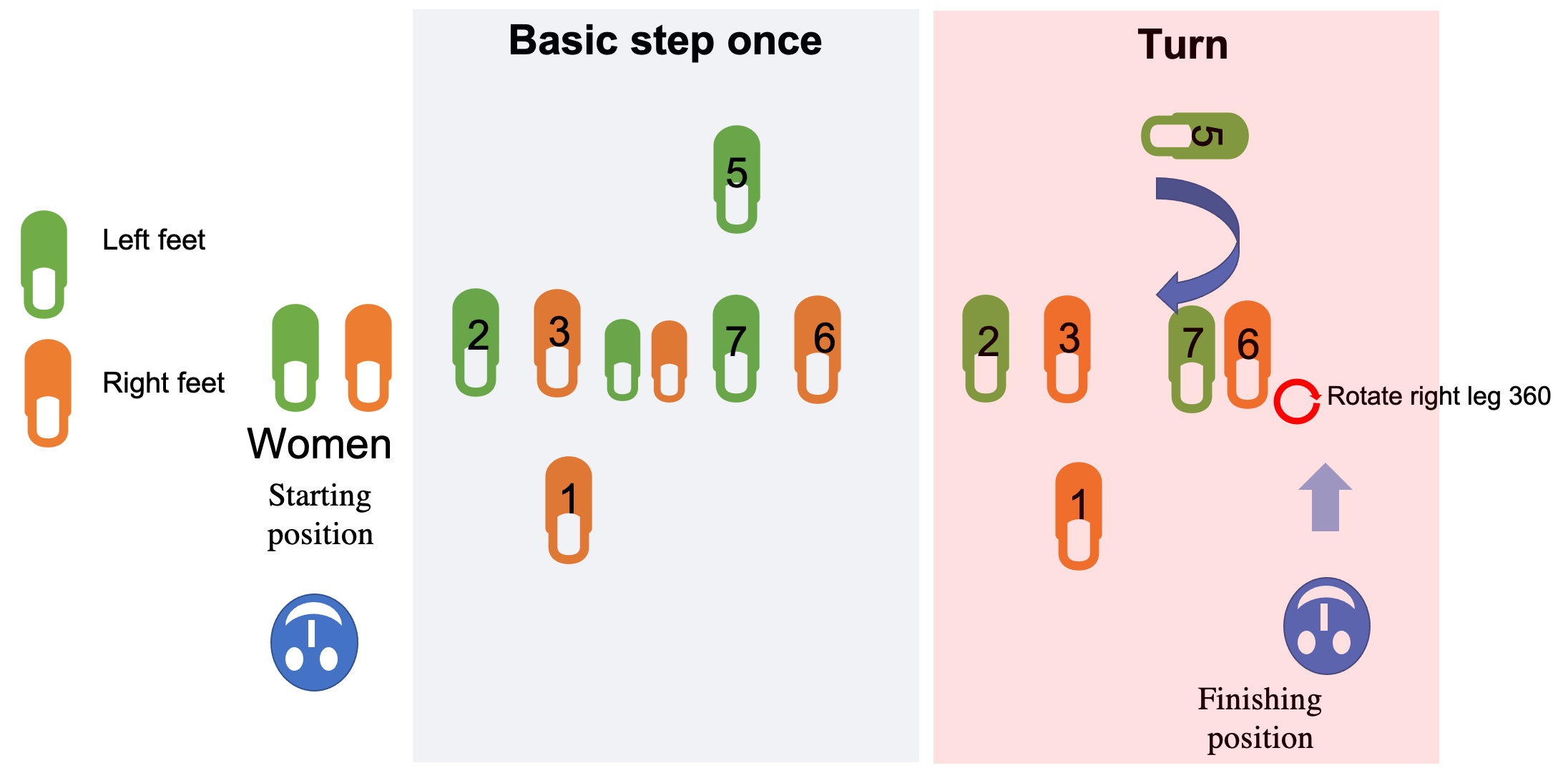
There are two basic steps illustrated here. Each is executed over two measures (1 to 4 and 5 to 8). The first is called “basic salsa step”, and the second is “turn”.
■ 1st basic
Your role is to step on the 1st beat of the clave you hear (what is called dance on 1).
For men:
– You move forward on 1,
– Come back to center on 3 with the anchoring help of the 2nd beat (2).
– Then you do the same thing backward with your opposite leg (5) and come back to center on 8.
You must imagine yourself being held by two tight elastic ropes. One is in front of you, the other one in your back. The rope behind you pulls you back as you try to escape forward. And as you try to go to the back, the front one does the same opposite job. If you think that way, you realize you must bend the knee and use your hips. If you just use your feet, you will be off-balance, either forward or backward. Seen it many times with debutants.
For ladies, you do the exact opposite of what the man does, starting with your right foot backward on the 1st beat of the clave.
■ 2nd basic
You both make a turn for the second step (basic salsa turn). The man does it on the 1st measure (1 to 3), while the lady goes on the second one (5 to 7). For her to spin properly, the man must give her the instruction. For that:
– You use your left arm (at head level) to create a clockwise circular motion.
– Because you also brought her right hand at head level, she will naturally follow when you create that motion (with the tips of your middle fingers).
Most men struggle to “give the turn order”. Just watch the video for explanations.
Where did Salsa dance come from?
Salsa dance took the world by storm 60 years ago. It started with the mass migration to the united states of Cubans, Puerto Ricans, and habitants of other Latin American countries. These people brought with them their culture, food, and music. Musicians such as Cheo Feliciano, Pacheco, Hector Lavoe, and Celia Cruz greatly help spread the “fever” in the seventies.
In reality, salsa dance has many roots. The one depicted above is more connected to New York-style salsa. However, Cuban salsa dance (called casino) draws its root from the island’s wide variety of Cuban dance styles.
🇨🇺 Salsa dance and economic growth
There is even a connection between the adoption of salsa by a country and its economic development. The US in the seventies, then Europe followed by Japan in the 90s, and China at the beginning of the 20th century. It can even be argued that China now, not the US, is the hub of salsa dance. There is not a single day when cities like Shanghai go without a salsa dance party, sometimes more than two a night.
🇨🇺 Types of salsa dance
There are many styles of salsa dances. The purpose of this article is not to go over them extensively, as one of the biggest problems of salsa today is the cataloging into styles. Sometimes that classification can take on somewhat ugly forms. Indeed, partners might refuse to dance with one another because “they dance on 2”, when the others “dance on 1”. But if you want to know more about the different styles, check out my Guide on Salsa Dancing.
Let’s now go over why I believe salsa dance is overlooked as an excellent source for external and internal well-being.
Salsa dance as a network tool
Very few activities can instantaneously create as strong social networking as salsa dance can.
If you think about the term, it all lies in how close your connection is with the persons you network with. You would judge a networking event successful if you created a good number of connections with different people. Likewise, it will be deemed unsuccessful if that amount is low. Salsa dance solves this problem in one stroke since it involves close contact between humans. Two people or groups of people connect together (casino Rueda).
Furthermore, the other great advantage of salsa dance is that it instantly breaks the ice. The festive and joyful music automatically creates relaxed minds and bodies, which leads to strong interactions. So much so that even horses join the party sometimes.
🇨🇺 Salsa dance as a tool for business team work
It’s the first time I see these people with such happy faces
One of the key impediments to great teamwork in office is the lack of trust and openness to other individuals. When an activity such as salsa breaks down barriers, it is easy to see why it can be a great networking tool for businesses. For example, I implemented a casino Rueda salsa dance workshop in one of my programs with a company. The lady who bought the program for her company commented, “It’s the first time I see these people with such happy faces and communicating so easily. They just forget about hierarchy and levels”. I smiled. But not everyone knows how powerful dance can be.
It is such a great networking tool that many couples are formed during salsa dance parties.
🇨🇺 Salsa dance and the formation of couples
Unlike other kinds of parties, salsa events are more subdued and less loud. The setting is therefore suited for people who want to engage in conversations after dancing. Moreover, most of the people at these parties tend to be regulars. And that’s great, especially if you are a female who does not want to be harassed constantly but might be open to a conversation with a gentleman. You might think, “If I can’t dance, how can I invite anyone to dance?”. My answer is, “Unless you overcome those hurdles, you will always be in the corner watching and never enjoying.” Furthermore, there is always a man or lady who will accept to dance with you no matter your level. So, go and ask. I was asked hundreds of times, and I never turned down anyone.
Salsa dance as well-being tool
🇨🇺 Inner and Outer
Another aspect of salsa dance that might also be overlooked is its positive effect on an individual’s well-being. Nothing can change someone’s mood faster than dance, especially salsa dance. When someone experiences a strong sense of inner well-being, his/her external body shows it off. A glow can be seen on the person’s face.
For example, I can dispose of the notion of time within seconds of starting to dance. All pains evaporate in an instant. And I am transported into a dimension where my whole system synchronizes to the tempo of the songs. The Manipura chakra gets stimulated and inspired; ideas flow endlessly.
So much so that I would advise anyone who practices by himself/herself at home; to keep a notepad nearby. Indeed, ideas about whatever you might try to solve will come up in flood.
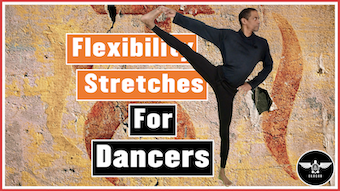
Salsa dance to lose weight
Besides social networking and well-being, salsa dance can be a pleasurable way to lose weight. Pleasurable since there are only so many activities that can help you lose weight without strenuous efforts. Take Cuban salsa, for example. This dance has so many rhythms, levels, and pace changes that it is a great way to challenge endurance and resistance. This, in turn, help lose weight within a matter of weeks.
Rumba, which is part of Cuban salsa, is a very playful dance that involves the strong use of our leg muscles. Done correctly and long enough, it constitutes an exercise that will help you lose weight and build strong muscle.
Discover new, untapped materials
Learn Cuban Salsa, Bachata, Improv’ and many other dance styles. Check out these videos and see what you can achieve in less than 3 months. Private lessons available for just £35/Hour. Free body movement and basic salsa and bachata lessons provided.



